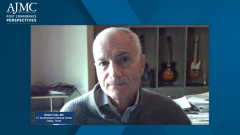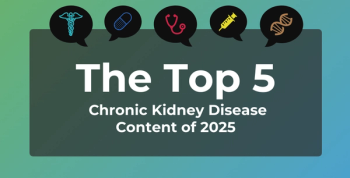
Findings From the DAPA-CKD Study: Reductions in Healthcare Resource Utilization
A recap of the dapagliflozin data from the DAPA-CKD study and how it relates to reductions in healthcare resource utilization.
Episodes in this series

Robert Toto, MD: What they found was not too surprising because you’d expect that if you’re reducing clinical events—progression of kidney disease and development of heart failure—that would find you cost savings. The most striking thing was they showed that the cumulative event incidence for a sustained reduction in estimated GFR [glomerular filtration rate], which is a significant decrease in kidney function, it’s not kidney failure, but significant decrease in kidney function, that was reduced in the patients who were taking dapagliflozin. Similarly, if you looked at kidney failure, which they called ESRD, end-stage renal disease, we now call that kidney failure in the kidney literature, that was significantly reduced, as well as hospitalization for heart failure and all-cause mortality. If you then take those basic observations, and you evaluate the cumulative medical care cost effects, what that translated into for all of the participants in each group over time was a $99 million offset in health care utilization costs for those randomized to dapagliflozin versus placebo.
If you break that down by age group, for those less than 65 years of age, it was around $120 million, and for those greater or equal to 65, it was around $122 million, or roughly the same amount. So there was overall a 33% reduction, and 37% and 26% reductions for those less than 65 and those greater or equal to 65. They also did look at other outcomes besides sustained reduction in kidney function, kidney failure, and death. They looked at dialysis, and they also looked at acute kidney injury and hyperkalemia, which are complications of chronic kidney disease [CKD]. They also looked at kidney death, meaning somebody dies from kidney failure because they don’t have access to dialysis, or determines they don’t want to go on dialysis, and a transplant is not available. They also looked at cardiovascular death, and what they found was that the incidence of all of these events was lower in the [dapagliflozin] group compared to the placebo group.
What I would take away from this analysis is that dapagliflozin significantly reduced health care resource utilization in patients with CKD through delayed progression of their kidney disease and reduced event incidence, helping to ameliorate the burden imposed by CKD, both for patients as well as for payers. I would say that the value of using a drug like dapagliflozin in this patient population is not just to reduce these events, but also to improve the quality of life of the patient. The rationale behind that statement is that if a patient’s kidney disease is being slowed, they stay in a less severe stage of kidney disease for a longer period, so they tend to experience less severe effects on their quality of life, such as sleep [issues] or fatigue, which occur in patients with chronic kidney disease.
There are some things that are not really studied in the poster, but I’m mentioning these, because these are things I see clinically in my practice that I think are important, and they’re certainly important for the patient, and of course, they’re very important for the payer as well. I think that this poster is an example, and again it’s a model, so this has to be tested to be proven, but it certainly suggests that you would reduce the utilization of health care costs, with substantial savings over time, with the use of dapagliflozin. Now, the poster doesn’t include what it actually costs for the drug, that’s not part of this analysis, so there are more studies that need to be done. But I think this points out where more research in health care utilization is needed, and [the need to] get more into the nitty gritty of where these costs are actually going.
These results are based on a 1-year estimate, and over time I would expect that the cost savings would go up, because you’re extending the time for patients to go on dialysis or to go to kidney transplant, so one would expect that the savings from health care resource utilization would increase over time. In terms of the number of patients needed to treat, I would expect that that number would be decreasing over time as well. We’re talking here about CKD, but we’re not breaking it down by stage of CKD, and people who would initiate a drug that is protecting the kidney earlier in the course of their disease may save a lot more over time, compared to somebody who’s initiating the drug at a more advanced stage of their disease.
If you start the drug earlier in the course of kidney disease, you’re going to extend the time to end stage, and may keep the patient out of the hospital longer, so I would expect the savings to go up after a year, particularly for somebody who starts the drug at an earlier stage compared to a later stage of the disease. I would expect the number needed to treat to go down, and the benefits in terms of savings in health care utilization and resources to improve as well.
Transcript edited for clarity.
Newsletter
Stay ahead of policy, cost, and value—subscribe to AJMC for expert insights at the intersection of clinical care and health economics.































































